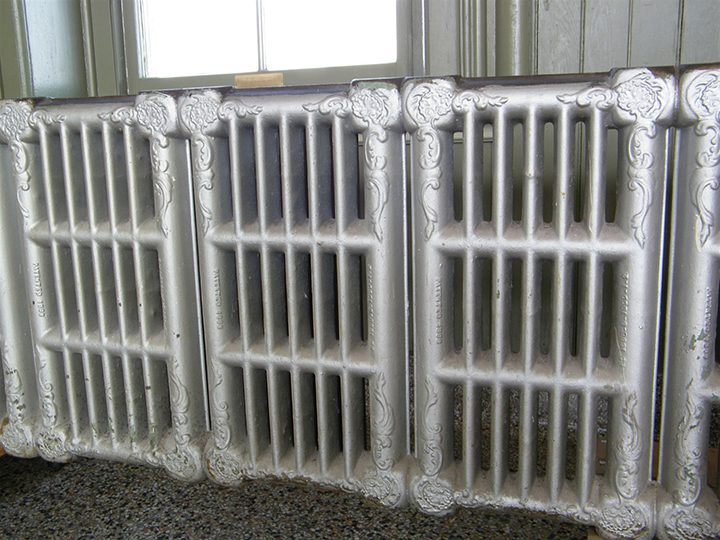Inducted in 2012
In 1892, industrialist John Pierce convinced several independent manufacturers to join his business, the Pierce Steam Heating Company, to form the American Radiator Company. Eager to prove its worth, the newly formed company worked hard to attract the attention of large and expanding corporations requiring new heating systems for their buildings.
With its annual publication, The Ideal Fitter: American Radiators & Ideal Boilers, American Radiator began to expand to serve the entire continent. With factories throughout the Midwest and Northeast, the American Radiator Company quickly became known as a company aiming to build quality products at a low cost.
At the Canada Southern Station the old system of potbelly stoves within the building proved to be inefficient and unsatisfactory for passengers increasingly accustomed to buildings with central heating. Further, such decentralization was a safety hazard as inevitably many of the fires would be unattended for periods of time.
In 1899, American Radiator patented a new type of radiator that was to be revolutionary in the heating of large commercial buildings. The new radiator combined the functionality of large industrial radiators with the aesthetically pleasing nature of domestic residential radiators in order to facilitate the complete heating of public spaces.
This new style caught the attention of those charged with passenger comfort and the maintenance of the Canada Southern Station. Tired with the constant refueling of potbelly stoves and cold winter months these new radiators were installed.
Lining the north, south, and west walls of the Women’s Waiting Room; the north and west walls of the Men’s Waiting Room; and various other rooms throughout the building these radiators were a welcome addition. These changes were made around 1918 with the construction of a power house near the MCR Locomotive Repairs Shops. Heat was delivered to buildings of the Michigan Central Yards through underground tunnels, making winter work for staff more comfortable, and thus increasing efficiency.
The Ideal Fitter highlighted the usefulness of American Radiator’s built-in brackets. These brackets were independent from the floor and attached to the walls directly, making it easier to keep the floor mopped and clean. Since the radiators were added to the CASO Station more than a quarter century following its construction these radiator brackets could not be built into the wall as was planned by American Radiator. Instead, the brackets were drilled through the entire wall, with bolts on the external walls keeping them in place.
John Pierce wanted his company’s legacy to contribute to “… the increase of knowledge to the end that the general hygiene and comfort of human beings and their habitations may be advanced.” His wish was certainly fulfilled at the Canada Southern.
With American Radiator rapidly expanding in Europe the company was able to build the massive American Radiator Building in Chicago in 1924. In 1929 American Radiator merged with the Standard Sanitary Corporation to form the American Standard Corporation everyone.


